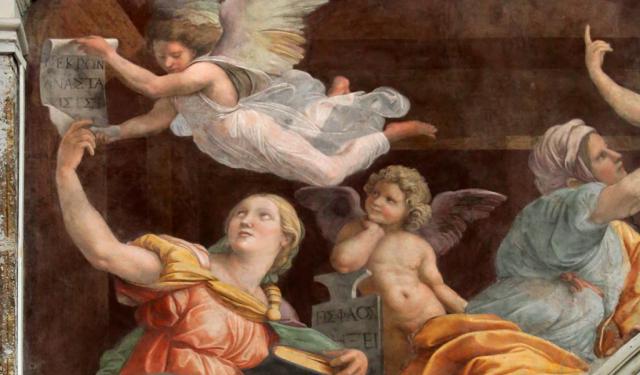
Obelisco Vaticano (Obelisk of St Peter's Square), Rome
Rome hosts the largest collection of obelisks in the world, including eight Egyptian and five Roman ones. While Egyptian obelisks were typically erected as single blocks in front of temples or pyramids honoring the sun god Ra, Roman obelisks often served as dedications to the ruling emperor of the time. Unlike their Egyptian counterparts adorned with hieroglyphics, Roman obelisks were simpler in design.
The obelisk in Saint Peter's Square has a fascinating history. Now known as the Vatican Obelisk, it was brought from Heliopolis, Egypt, by Emperor Caligula in 40 AD. Transporting obelisks was a complex and challenging task, requiring the construction of special boats, known as "obelisk boats", designed specifically for the purpose. The Caligula obelisk was originally installed at the center of his circus, later known as the Circus of Nero. This site is now largely encompassed by Vatican City.
Saint Peter was martyred in Rome in 64 AD under Emperor Nero. According to legend, he was crucified upside down, at his own request, deeming himself unworthy to die like Jesus. His crucifixion occurred in the Circus of Nero near the obelisk, which is now revered as a memorial “witness” to Peter’s death.
In 1586, Pope Sixtus V ordered relocating the obelisk to its current position next to Saint Peter’s Basilica, as a symbolic gesture representing the triumph of Christianity over paganism. This monumental task, directed by architect Domenico Fontana, took over 13 months of preparation and the use of 800 men, 160 horses, and 45 winches. On the day of the move, a sailor named Benedetto Bresca famously shouted, “Water on the ropes!” to prevent the ropes from snapping under the obelisk's weight.
A medieval legend held that the bronze globe atop the obelisk once contained the ashes of Julius Caesar or Trajan. During the obelisk relocation, the globe was removed and eventually placed in the Conservators' Palace in 1848. Sixtus V granted indulgences to those venerating the cross atop the obelisk which was believed to have included a relic of the True Cross within it. However, no relic was discovered during later restorations. In 1740, a reliquary from Saint Peter’s Basilica was placed inside the cross.
The red granite monument reaches a height of over 25 meters (or nearly 40 meters together with its cross and bronze-lion base) and is the only ancient obelisk in Rome that has never fallen.
The obelisk’s inscriptions reflect its historical journey. Two ancient inscriptions commemorate its dedication to the emperors Augustus and Tiberius, while four inscriptions added during its re-dedication in 1586 highlight its Christian significance. These include declarations of Christ’s victory and the acknowledgment of Domenico Fontana’s pivotal role in moving and erecting the obelisk.
The obelisk in Saint Peter's Square has a fascinating history. Now known as the Vatican Obelisk, it was brought from Heliopolis, Egypt, by Emperor Caligula in 40 AD. Transporting obelisks was a complex and challenging task, requiring the construction of special boats, known as "obelisk boats", designed specifically for the purpose. The Caligula obelisk was originally installed at the center of his circus, later known as the Circus of Nero. This site is now largely encompassed by Vatican City.
Saint Peter was martyred in Rome in 64 AD under Emperor Nero. According to legend, he was crucified upside down, at his own request, deeming himself unworthy to die like Jesus. His crucifixion occurred in the Circus of Nero near the obelisk, which is now revered as a memorial “witness” to Peter’s death.
In 1586, Pope Sixtus V ordered relocating the obelisk to its current position next to Saint Peter’s Basilica, as a symbolic gesture representing the triumph of Christianity over paganism. This monumental task, directed by architect Domenico Fontana, took over 13 months of preparation and the use of 800 men, 160 horses, and 45 winches. On the day of the move, a sailor named Benedetto Bresca famously shouted, “Water on the ropes!” to prevent the ropes from snapping under the obelisk's weight.
A medieval legend held that the bronze globe atop the obelisk once contained the ashes of Julius Caesar or Trajan. During the obelisk relocation, the globe was removed and eventually placed in the Conservators' Palace in 1848. Sixtus V granted indulgences to those venerating the cross atop the obelisk which was believed to have included a relic of the True Cross within it. However, no relic was discovered during later restorations. In 1740, a reliquary from Saint Peter’s Basilica was placed inside the cross.
The red granite monument reaches a height of over 25 meters (or nearly 40 meters together with its cross and bronze-lion base) and is the only ancient obelisk in Rome that has never fallen.
The obelisk’s inscriptions reflect its historical journey. Two ancient inscriptions commemorate its dedication to the emperors Augustus and Tiberius, while four inscriptions added during its re-dedication in 1586 highlight its Christian significance. These include declarations of Christ’s victory and the acknowledgment of Domenico Fontana’s pivotal role in moving and erecting the obelisk.
Want to visit this sight? Check out these Self-Guided Walking Tours in Rome. Alternatively, you can download the mobile app "GPSmyCity: Walks in 1K+ Cities" from Apple App Store or Google Play Store. The app turns your mobile device to a personal tour guide and it works offline, so no data plan is needed when traveling abroad.
Obelisco Vaticano (Obelisk of St Peter's Square) on Map












Sight Name: Obelisco Vaticano (Obelisk of St Peter's Square)
Sight Location: Rome, Italy (See walking tours in Rome)
Sight Type: Attraction/Landmark
Guide(s) Containing This Sight:
Sight Location: Rome, Italy (See walking tours in Rome)
Sight Type: Attraction/Landmark
Guide(s) Containing This Sight:
Walking Tours in Rome, Italy
Create Your Own Walk in Rome
Creating your own self-guided walk in Rome is easy and fun. Choose the city attractions that you want to see and a walk route map will be created just for you. You can even set your hotel as the start point of the walk.
Rome Introduction Walking Tour II
Rome, the Eternal City, carries a legacy shaped by centuries of resilience, transformation, and cultural flourishing. The fall of the Roman Empire in 476 AD marked the end of an era, plunging Western Europe into the dark Middle Ages. Yet, even amid the disarray, Rome endured as a beacon of unity, largely due to its status as the center of Catholicism. The papacy wielded spiritual influence,... view more
Tour Duration: 2 Hour(s)
Travel Distance: 3.4 Km or 2.1 Miles
Tour Duration: 2 Hour(s)
Travel Distance: 3.4 Km or 2.1 Miles
Hidden Art Treasures in Rome
Rome is one of the world's top living museums, replete with some of the most iconic pieces of art on the face of the planet. Famous artists, such as Michelangelo, Caravaggio, Raphael, Bernini, to mention but a few, had lived and worked here and left indelible marks in the city.
Needless to say that the abundance of masterpieces makes Rome crowded with tourists anxious to see them, causing... view more
Tour Duration: 2 Hour(s)
Travel Distance: 3.2 Km or 2 Miles
Needless to say that the abundance of masterpieces makes Rome crowded with tourists anxious to see them, causing... view more
Tour Duration: 2 Hour(s)
Travel Distance: 3.2 Km or 2 Miles
Trastevere Walking Tour
Heading down from the Vatican along the River Tiber, one is bound to find yet another city hidden within the city – Trastevere. This name translates literally to "across the Tiber". Indeed, crossing the picturesque Ponte Sisto (Sisto Bridge) to the west bank, you will find yourself in a charming neighborhood with a distinct character that sets it apart from any other part of Rome.
... view more
Tour Duration: 2 Hour(s)
Travel Distance: 2.9 Km or 1.8 Miles
... view more
Tour Duration: 2 Hour(s)
Travel Distance: 2.9 Km or 1.8 Miles
Rome Shopping Streets Walking Tour
Loved by tourists for its busy fashionable streets and significant baroque icons, the so-called ‘Tridente’ is one of the Eternal City's most lusted-after areas, formed by Via dei Condotti, Via Borgognona, Via Frattina and the adjacent Via del Corso. It is perhaps the most high-end destination for Roman shopping, with a concentration of renowned jewelers and important Italian/international... view more
Tour Duration: 2 Hour(s)
Travel Distance: 2.9 Km or 1.8 Miles
Tour Duration: 2 Hour(s)
Travel Distance: 2.9 Km or 1.8 Miles
Palatine Hill Walking Tour
Palatine Hill is one of the seven hills of Rome and the most ancient part of the capital. Based on Roman mythology and archaeological evidence, this hill is considered the birthplace of the city – a place where legendary Romulus founded it in 753 BC. Furthermore, the very word “palace” – indicating the emperor’s residence (“Palatium”), much as that of other dignitaries and prominent... view more
Tour Duration: 1 Hour(s)
Travel Distance: 1.0 Km or 0.6 Miles
Tour Duration: 1 Hour(s)
Travel Distance: 1.0 Km or 0.6 Miles
Holy Sites Walking Tour
As the cradle of the Catholic Church, one of the world's largest organizations, Rome has a large number of valuable, sacred places of worship. Crowded with architectural splendors from different periods of time, each of its churches and basilicas represent a significant part of culture and history.
Take this self-guided walking tour to discover Rome's magnificent religious heritage,... view more
Tour Duration: 3 Hour(s)
Travel Distance: 6.9 Km or 4.3 Miles
Take this self-guided walking tour to discover Rome's magnificent religious heritage,... view more
Tour Duration: 3 Hour(s)
Travel Distance: 6.9 Km or 4.3 Miles
Useful Travel Guides for Planning Your Trip
17 Best Gelaterias in Rome Italy
For ice cream lovers and dabblers this guide is a treasure chest of Rome’s best gelato shops. There are gelaterias everywhere. Many visitors to Rome only have a few days to explore the city. You owe it to yourself to make the most of your time and find the gelato locals eat. Often the authentic...
Souvenirs Shopping: 15 Authentic Italian Things To Buy in Rome
Rome is the Eternal City and, as such, the list of gift options available here is countless. Whether it's something edible, drinkable, wearable or pleasing to the eye that you want - you will find it all here in abundance. However, if time or budget is the factor, perhaps you might want to...
10 Best Food Markets in Rome Italy
Of all the things Italy is most famous for (cars, music, fashion, movies, etc.), food is, undoubtedly, top of the list. Rome may well not be the whole Italy, but no Italy is whole without Rome... And the Romans, much as all their fellow-Italians, like it "fresco", hence the abundance of...









